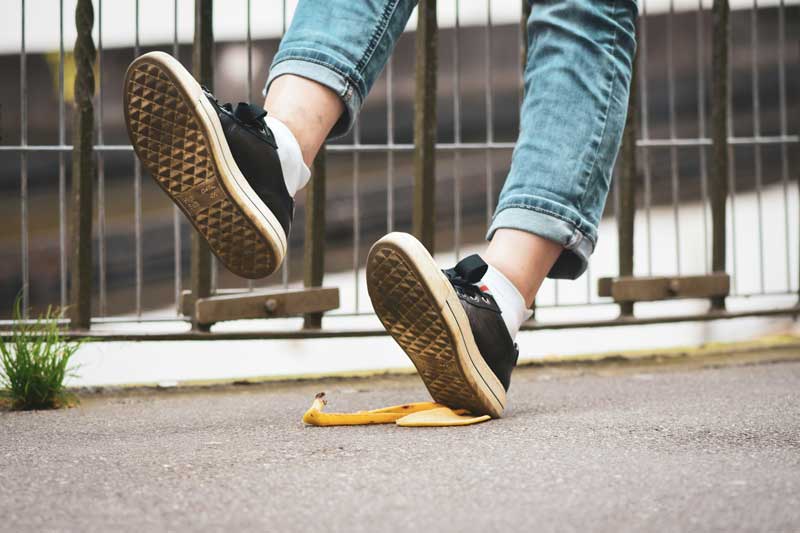Every step can feel uneasy for someone living with Parkinson’s disease (PD). The simple act of walking across a room can be met with unexpected tremors, a momentary freeze in movement, or loss of balance. Parkinson’s disease (PD) is a progressive neurological condition that affects movement and coordination. For those living with Parkinson’s, falls are often inevitable and can lead to injuries, reduced mobility and other challenges that prevent them from getting the most out of life. This is why fall prevention is important for improving quality of life and keeping people living with Parkinson’s safe and active. By focusing on improving balance, strength, and mobility, physiotherapists help patients maintain independence and confidence in their daily activities.
In Australia, around
60% of people with Parkinson’s experience each year, with many experiencing recurrent falls. This is due to a number of different factors:
-
Tremors: Involuntary shaking can affect balance and coordination.
-
Rigidity: Muscle stiffness limits the range of motion, affecting movement.
-
Bradykinesia: Slowness of movement or speed, or hesitations and halts, which can affect reaction times.
-
Postural Instability: Impaired balance mechanisms increase the likelihood of unsteadiness and falls.
-
Freezing of Gait (FOG): Sudden, temporary inability to move the feet forward.
The physical injuries that result from falls can be serious, ranging from fractures and head injuries to psychological effects, such as fear of falling which can result in a loss of independence.
Subscribe for FREE to the HealthTimes magazine
Physiotherapy is a key intervention in mitigating fall risks for those with Parkinson’s disease (PD). By targeting the underlying causes of instability and mobility challenges, physiotherapists develop personalised strategies to enhance safety, build confidence and improve quality of life.
Physiotherapy begins with a thorough assessment that may include gait analysis and identifying abnormalities in walking patterns, balance testing and strength evaluation that looks at muscle weakness. These evaluations help physiotherapists create tailored treatment plans addressing specific fall risk factors. The aim for those living with Parkinson’s is to be able to get about their daily activities without the risk of injury. This means looking at simple everyday tasks, such as getting out of bed and retraining with safe solutions to protect from falls.
Physiotherapy offers a range of evidence-based interventions designed to reduce fall risk in those with Parkinson’s disease. These interventions focus on improving balance, strength, and mobility, which, in turn, improve safety and quality of life.
-
Dual-task exercises focus on performing a motor task and a cognitive task simultaneously, such as walking while counting backwards. This training improves cognitive-motor integration, which has been associated with reductions in fall rates.
-
Freezing of gait (FOG) is a common symptom of Parkinson’s, which can stop people from being able to step or move forward. Cueing strategies can be used to tell your body to do a certain thing, such as step forward. This helps them take control and reduce worries when it happens.
-
Hydrotherapy, or aquatic therapy, uses water to help with movement. The buoyancy reduces the load on joints, making it easier to perform exercises that improve strength and balance.
-
Treadmill training helps with practising walking patterns and improving gait. It can improve walking speed, stride length and overall mobility.
-
Group therapy sessions offer social interaction and peer support, which can motivate people living with Parkinson’s to stick to exercise programs.
As technology improves, so do the tools available to help people living with Parkinson’s. These can be used with traditional physiotherapy techniques to provide real-time feedback, monitoring and safety interventions.
Researchers at Neuroscience Research Australia (NeuRA) and UNSW Sydney are developing smart garments with sensors to monitor movement patterns in real time. These garments aim to detect early signs of instability, allowing for timely interventions to prevent falls.
There have also been innovations in wearable sensors, such as
flexible wearable sensors, which are designed to detect freezing of gait (FoG) in Parkinson's patients. These sensors use deep learning algorithms to provide alerts, helping prevent falls associated with FoG.
VR and AR technologies offer immersive environments for practising balance and mobility. Studies have shown that
VR-based treadmill training can reduce fall risk by providing a controlled environment to practice walking and balance tasks.
NeuRA is developing AR smartphone exercise games aimed at improving fall risk in older adults. These games encourage physical activity through interactive exercises, enhancing balance and coordination in a fun and engaging way.
Smart technology is also been brought into living spaces to improve safety for those with Parkinson’s. Care homes are starting to use AI-driven monitoring systems that detect unusual movements or behaviours, alerting staff to potential falls or health issues. These systems have been shown to reduce bedroom falls. Sensors are also being placed around the home to monitor movement patterns, detect falls, and even adjust lighting to prevent accidents, creating a safer living environment.
The integration of these technologies into fall prevention strategies offers promising enhancements to traditional physiotherapy approaches, providing individuals with Parkinson’s disease additional tools to maintain independence and reduce the risk of falls.













